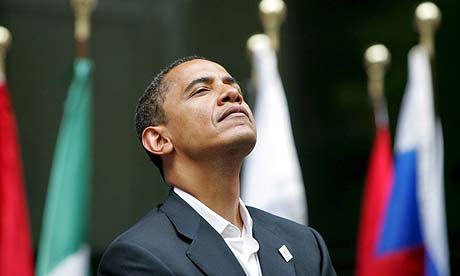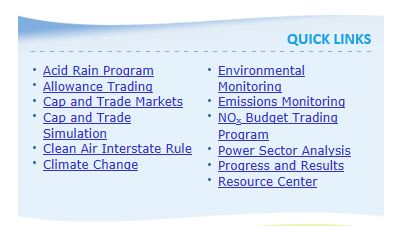by as Dawn sees it & Arlen Williams
Video, “Obama In 1998: ‘I Actually Believe In Redistribution’“
Finally, in 2012, much is being made of a haltering soliliquy by Barack Obama in 1998, on the redistribution of America’s wealth, the audio provided above and an excerpt shown below.
…we do have to be innovative in thinking, what are the delivery systems that are actually effective and meet people where they live. And my suggestion I guess would be that the trick – and this is one of the few areas where I think there are technical issues that have to be dealt with, as opposed to just political issues – I think the trick is figuring out how do we structure government systerms that pool resources and hence facilitate some redistribution….
Throughout the Agenda 21 publication one sees talk of “developed” and “developing” countries. One soon understands they are referring to the United States as a “developed” country (rich, industrialized, oil consuming, and not good for the environment or the world overall, by its portrayals) while other nations are called as “developing” countries (the poorer countries).
Below is an example in Agenda 21 which declares it is the richer nations which are putting an undue burden on poorer nations, through their “excessive demands and unsustainable lifestyles.”
Section I Social & Economic Dimensions Chapter 4
A. Focusing on unsustainable patterns of production and consumption
Basis for action
4.5. Special attention should be paid to the demand for natural resources generated by unsustainable consumption and to the efficient use of those resources consistent with the goal of minimizing depletion and reducing pollution. Although consumption patterns are very high in certain parts of the world, the basic consumer needs of a large section of humanity are not being met. This results in excessive demands and unsustainable lifestyles among the richer segments, which place immense stress on the environment. The poorer segments, meanwhile, are unable to meet food, health care, shelter and educational needs. Changing consumption patterns will require a multipronged strategy focusing on demand, meeting the basic needs of the poor, and reducing wastage and the use of finite resources in the production process.
It does not take long to see out how the authors intend for the world to feel about our “developed” country. As contempt for the United States seems to be growing around the world (as well as amidst various groups inside our own country) it will not require much convincing to many, that our nation somehow owes the rest of the world.
On the other hand, this is all about “saving the planet” right? What a perfect opportunity to redistribute our wealth. But, how does one go about redistributing wealth gloabally? This is where Cap and Trade comes in.

Barack Obama issued an Executive Order on August 30, 2012, titled “Accelerating Investment in Energy Efficiency.” It is one of a surprising number of EO’s having to do with Agenda 21 and its redistributive effects. The word accelerate is a key. Why the need to push this through fast?
As much must be done as possible, as soon as possible, before many Americans catch on. Let us look at a few things in the Agenda 21 publication about energy (italics added) to begin to see how this is to be accomplished.
A. Integrating environment and development at the policy, planning and management levels
Basis for action
8.2. Prevailing systems for decision-making in many countries tend to separate economic, social and environmental factors at the policy, planning and management levels. This influences the actions of all groups in society, including Governments, industry and individuals, and has important implications for the efficiency and sustainability of development. An adjustment or even a fundamental reshaping of decision-making, in the light of country-specific conditions, may be necessary if environment and development is to be put at the centre of economic and political decision-making, in effect achieving a full integration of these factors. In recent years, some Governments have also begun to make significant changes in the institutional structures of government in order to enable more systematic consideration of the environment when decisions are made on economic, social, fiscal, energy, agricultural, transportation, trade and other policies, as well as the implications of policies in these areas for the environment. New forms of dialogue are also being developed for achieving better integration among national and local government, industry, science, environmental groups and the public in the process of developing effective approaches to environment and development. The responsibility for bringing about changes lies with Governments in partnership with the private sector and local authorities, and in collaboration with national, regional and international organizations, including in particular UNEP, UNDP and the World Bank. Exchange of experience between countries can also be significant. National plans, goals and objectives, national rules, regulations and law, and the specific situation in which different countries are placed are the overall framework in which such integration takes place. In this context, it must be borne in mind that environmental standards may pose severe economic and social costs if they are uniformly applied in developing countries.
While most have been going about their daily lives unaware, the future of our country is being “transformed” into something that will not resemble the United States of America. The entire world is being transformed. To think that the United States will not be included in all these plans is naive at best.
And they have target dates for all that is being done; the date that keeps coming up is 2020. (Perhaps the name Rio+20 refers to this, as well as 2012’s twentieth anniversary of the Rio Accord’s adoption.) Below is an excerpt from the “IUCN World Conservation Congress”
10. We must mainstream sustainability in societal decisions, supporting the full implementation of the multilateral environmental agreements, including the Rio Conventions, and the recently established Intergovernmental Science-Policy Platform on Biodiversity and Ecosystem Services (IPBES).
11. We must work with the public and private sectors to enhance the transfer of green technology, share knowledge, experience and skills to integrate biodiversity and ecosystem values into global production and consumption. We encourage governments and businesses to pursue inclusive and gender-responsive green growth that ensures social integration of vulnerable groups, helps eradicate poverty, and keeps humanity’s footprint within ecological boundaries.
13. All sectors of society must participate fully in implementing the outcomes of Rio+20 at all levels, including the formulation of well-targeted Sustainable Development Goals. We must mobilize all stakeholders for the implementation of the Strategic Plan for Biodiversity 2011–2020 and the Aichi Targets (adopted at the 10th meeting of the Conference of the Parties of the Convention on Biological Diversity) as important means to tackle the underlying causes of biodiversity loss and to enhance the benefits to all from biodiversity and ecosystem services.
Let us look at portions of the aformentioned Executive Order, “Accelerating Investment in Industrial Energy Efficiency,” to see how the US is doing in making the transfer to “green technology.”
Sec. 2. Encouraging Investment in Industrial Efficiency. The Departments of Energy, Commerce, and Agriculture, and the Environmental Protection Agency, in coordination with the National Economic Council, the Domestic Policy Council, the Council on Environmental Quality, and the Office of Science and Technology Policy, shall coordinate policies to encourage investment in industrial efficiency in order to reduce costs for industrial users, improve U.S. competitiveness, create jobs, and reduce harmful air pollution. In doing so, they shall engage States, industrial companies, utility companies, and other stakeholders to accelerate this investment. Specifically, these agencies shall, as appropriate and consistent with applicable law:
(a) coordinate and strongly encourage efforts to achieve a national goal of deploying 40 gigawatts of new, cost effective industrial CHP in the United States by the end of 2020;
(b) convene stakeholders, through a series of public workshops, to develop and encourage the use of best practice State policies and investment models that address the multiple barriers to investment in industrial energy efficiency and CHP;
(c) utilize their respective relevant authorities and resources to encourage investment in industrial energy efficiency and CHP, such as by:
(i) providing assistance to States on accounting for the potential emission reduction benefits of CHP and other energy efficiency policies when developing State Implementation Plans (SIPs) to achieve national ambient air quality standards;
(ii) providing incentives for the deployment of CHP and other types of clean energy, such as set asides under emissions allowance trading program state implementation plans, grants, and loans;
(iii) employing output based approaches as compliance options in power and industrial sector regulations, as appropriate, to recognize the emissions benefits of highly efficient energy generation technologies like CHP; and
(iv) seeking to expand participation in and create additional tools to support the Better Buildings, Better Plants program at the Department of Energy, which is working with companies to help them achieve a goal of reducing energy intensity by 25 percent over 10 years, as well as utilizing existing partnership programs to support energy efficiency and CHP;
in Executive Order — Accelerating Investment in Industrial Energy Efficiency
To put it simply this is “Cap and Trade,” iniatiated with the help of the EPA and other agencies, as shown above. For example, looking at the “emissions allowance trading program” one finds this is just another name for “Cap and Trade.”
The “Quick links” on the page lined below lead one to a treasure trove of information corroborative of this very extensive and encroaching set of policies, directed by Agenda 21, aimed at global redistribution of wealth, all under the control of those who control the United Nations.
Cap and trade is an environmental policy tool that delivers results with a mandatory cap on emissions while providing sources flexibility in how they comply. Successful cap and trade programs reward innovation, efficiency, and early action and provide strict environmental accountability without inhibiting economic growth.
Examples of successful cap and trade programs include the nationwide Acid Rain Program and the regional NOx Budget Trading Program in the Northeast. Additionally, EPA issued the Clean Air Interstate Rule (CAIR) on March 10, 2005, to build on the success of these programs and achieve significant additional emission reductions.

…I think there are technical issues that have to be dealt with, as opposed to just political issues – I think the trick is figuring out how do we structure government systerms that pool resources and hence facilitate some redistribution…
— Barack Obama
And will Mitt Romney commit to reversing this Executive Order?

















Today, income redistribution occurs in some form in most democratic countries. In a progressive income tax system, a high income earner will pay a higher tax rate than a low income earner. The difference between the Gini index for an income distribution before taxation and the Gini index after taxation is an indicator for the effects of such taxation.
Romney states that he will close the “loopholes” the wealthy use to pay less tax than prescribed by the tax table. He does not specify what these loophole are. This too is a form of “redistribution”. He is insulting the intelligence of the American people by assuming we don’t know what redistribution means or implicates. As usual he will not tell us the specifics of his plan. He just says what the person standing in front of him at the time wants to hear. He obviously has no real plan for anything or any problem.